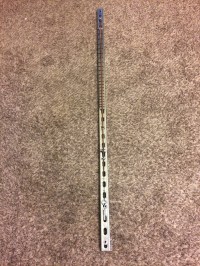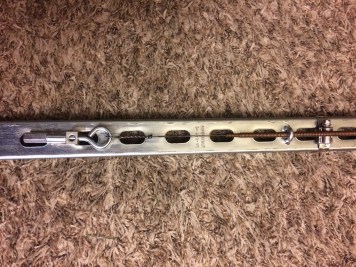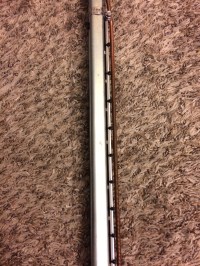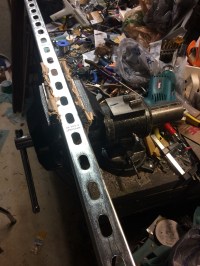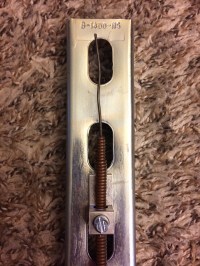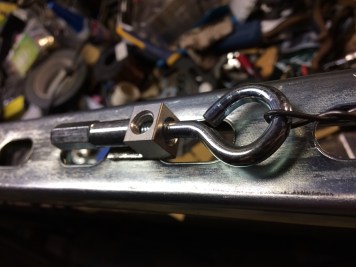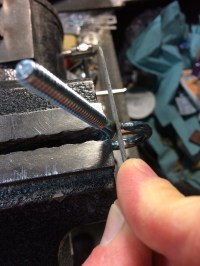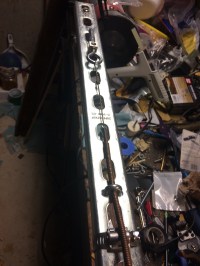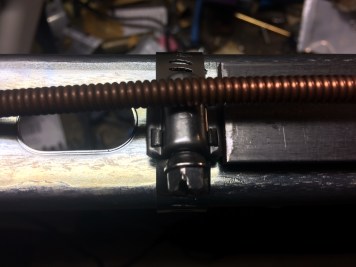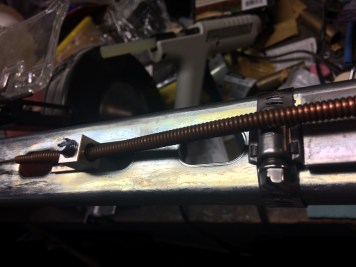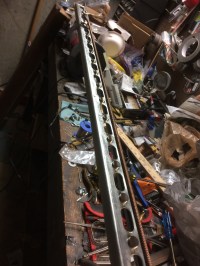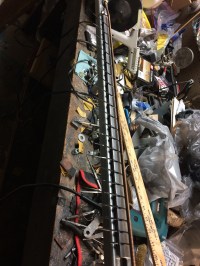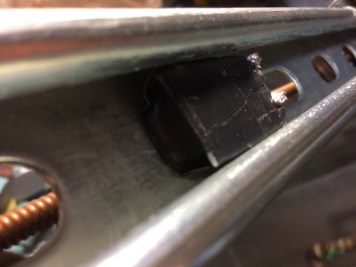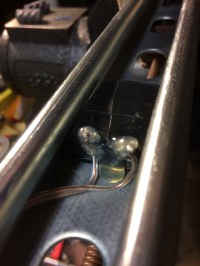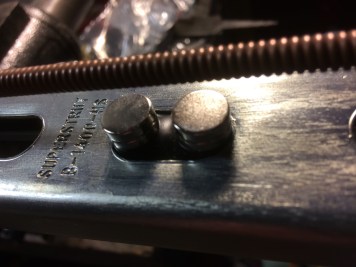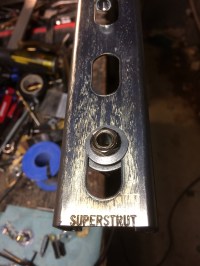





My grandma, Ruth, turned 92 on August 13th, so I thought I would make her a guitar from this cedar bible box that I found at a local thrift store.



The box had a cool grain, but I wanted to finish it with my usual vinegar and steel wool concoction, so I sanded it down. However, in the process, I lost the script and stamp on the front and back.

I began by cutting a hole in the box, which would fit the 1×2 maple stick and a 1/4×2 oak cover plate perfectly.


Sanding softened the appearance of the grain and added distress to the hardware.



I cut a slot for the tuners and the pickup in the body, then drilled holes for the string fasteners and carved the signature blades into the headstock. An oak fretboard was added, along with an oak electronics cover.
Then, I cut down a 3/8″ carriage bolt and filed a 3/8″ round slot in the fretboard at the nut position.

I Slipped the stick into the box and figured out where the three top holes should be drilled to correspond with the internal tuners.

I checked to see how the 6″ replica Roman crucifixion nail would look relative to the 24-3/4 scale length and everything lined up well.




New to this build is the official Junk Shop Audio branding iron. I found a branding iron maker that creates custom irons from solid brass. I made this small coal-burning heater based on plans I found on an outdoor survival site—it is comprised of two large can goods cans, a cat bowl, a drawer pull and a handful of nuts and bolts. I needed a rustic maker’s mark for my guitars and this branding iron fit the bill.
I changed the design to accommodate more fuel and higher heat, but the original portable stove can be found here:
https://www.treehugger.com/clean-technology/build-ultra-efficient-diy-wood-gasifier-backpacking.html

I installed a Nd144 Electromagnetic Cigar Box Guitar Pickup and a 1/4″ jack.



I secured the oak cover plate to the back and affixed the replica Roman nail card to the interior of the lid.



I measured and filed the fret markers, strung it with 10’s tuned to G-D-G and then made and added an American flag duct tape strap.
I’m really happy with the way this guitar plays. The additional height from the oak fretboard allows the player to fret notes and play slide for an additional range of sounds and playability.
Thanks,
![]()











































































